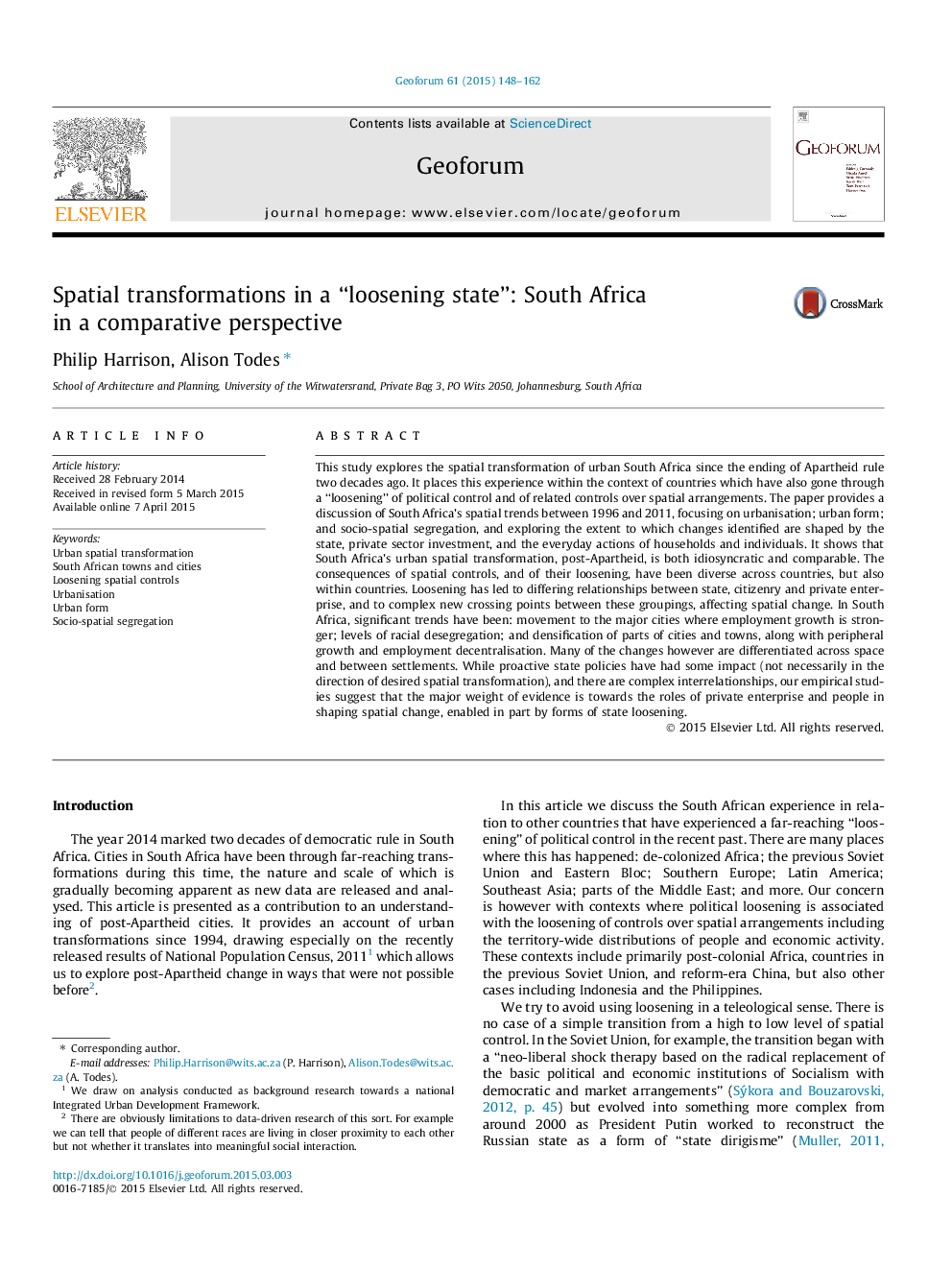| Article ID | Journal | Published Year | Pages | File Type |
|---|---|---|---|---|
| 5073779 | Geoforum | 2015 | 15 Pages |
Abstract
This study explores the spatial transformation of urban South Africa since the ending of Apartheid rule two decades ago. It places this experience within the context of countries which have also gone through a “loosening” of political control and of related controls over spatial arrangements. The paper provides a discussion of South Africa's spatial trends between 1996 and 2011, focusing on urbanisation; urban form; and socio-spatial segregation, and exploring the extent to which changes identified are shaped by the state, private sector investment, and the everyday actions of households and individuals. It shows that South Africa's urban spatial transformation, post-Apartheid, is both idiosyncratic and comparable. The consequences of spatial controls, and of their loosening, have been diverse across countries, but also within countries. Loosening has led to differing relationships between state, citizenry and private enterprise, and to complex new crossing points between these groupings, affecting spatial change. In South Africa, significant trends have been: movement to the major cities where employment growth is stronger; levels of racial desegregation; and densification of parts of cities and towns, along with peripheral growth and employment decentralisation. Many of the changes however are differentiated across space and between settlements. While proactive state policies have had some impact (not necessarily in the direction of desired spatial transformation), and there are complex interrelationships, our empirical studies suggest that the major weight of evidence is towards the roles of private enterprise and people in shaping spatial change, enabled in part by forms of state loosening.
Related Topics
Social Sciences and Humanities
Economics, Econometrics and Finance
Economics and Econometrics
Authors
Philip Harrison, Alison Todes,
